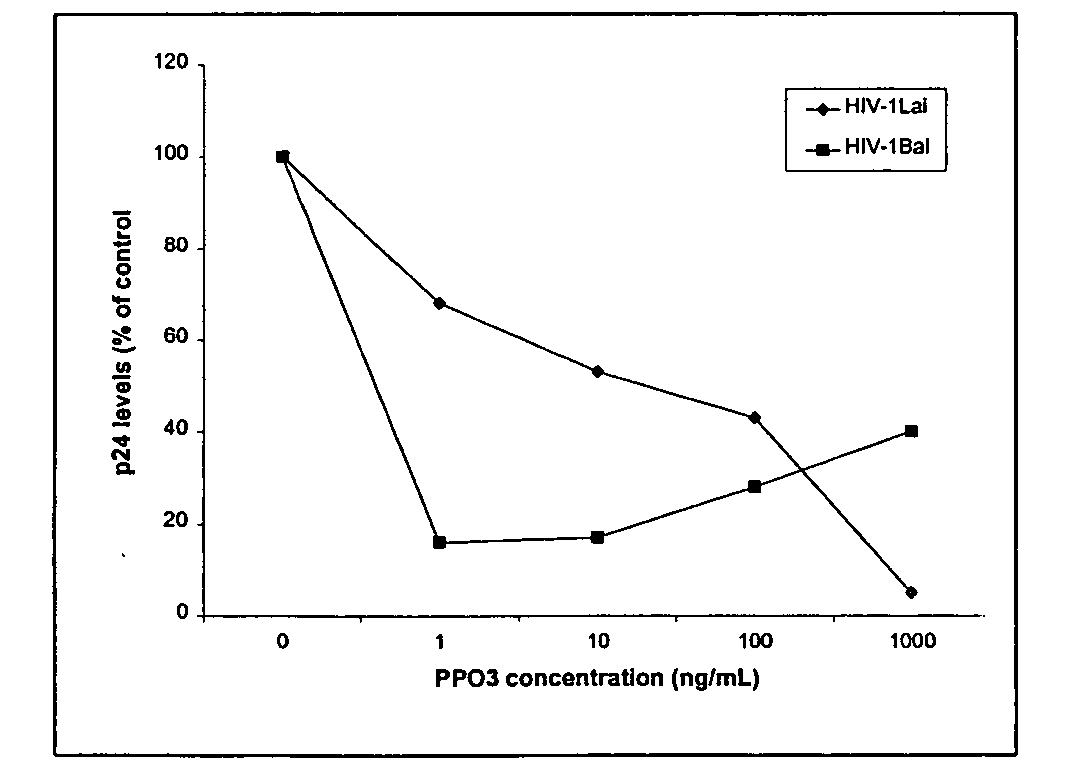Immunokine composition and method
a technology of immunomodulatory compounds and compositions, applied in the direction of immunological disorders, peptide/protein ingredients, peptide sources, etc., can solve the problems of rapid development of viral strains, inability to infect cells, and ba-l macrophage tropic strain, so as to prevent the initial hiv infection of the individual, prevent the infection of the cell, and limit the spread of the virus
- Summary
- Abstract
- Description
- Claims
- Application Information
AI Technical Summary
Benefits of technology
Problems solved by technology
Method used
Image
Examples
example 1
Isolation of Gland Tissue for RNA Extraction
[0102]The following protocol was used to clone the gene encoding α-cobratoxin from the venom of Naja naja siamensis.
[0104]Naja naja siamensis snakes were obtained from Siam Farms, Bangkok, Thailand. Animals were shipped to and housed at Ventoxin, Inc., Frederick, Md. USA. The venom glands from N. n. siamensis animals were surgically removed and used to prepare mRNA for generating a cDNA library. Snakes were placed on a schedule for milking (venom extraction). They were milked on day 1 and eight days later milked a second time. On the 2nd or 3rd day, they were anesthetized with sodium pentobarbital and their glands removed (Vandenplas et al., 1985). Gland tissue was quickly cut into small pieces and immediately frozen in liquid nitrogen. Samples were kept at −70° C. until use.
[0105](b) RNA Isolation
[0106]Total RNA was isolated from gland tissue by using a standard guanidinium / hot phenol method (Feramisco et al., ...
example 2
Recovery and Yield
[0139]A fermentation of a cytoplasmically-expressing clone harboring the gene encoding α-cobratoxin can be performed in a 5 L New Brunswick BioFlo III fermentor. The size of the fermentation can be scaled up or down depending on the requirement for product. For a 5 L batch, a frozen seed culture containing the alpha-cobratoxin construct is used to inoculate 10 ml of MGY media (see attached media recipe) in a test tube. After 18 to 20 hours growth at 30° C., 0.5 ml is used to inoculate 50 ml of MGY in a 250 ml flask. After 36 to 38 hours of growth, the entire 50 ml is used to inoculate the 5 L fermentor. The fermentation is performed in a basal salt medium with 26.7 ml 85% phosphoric acid, 0.93 g / L calcium sulfate-2H20, 18.2 g / L potassium sulfate, 14.9 g / L magnesium sulfate, 4.13 g / L potassium hydroxide, 40 g / L glycerol and 2 m / L of basal salts (PTM) are added. PTM basal salts consist of 2.0 g cupric sulfate, 0.08 g sodium iodide, 3.0 g magnesium sulfate, 0.2 g sodi...
example 3
Ozonation
[0143]Ozone (O3), a powerful oxidant, is used for water disinfection. In the course of the present invention, ozone treatment is preferably used to treat the recovered, inactive polypeptide in order to render it incapable of spontaneous reformation. Optionally, ozonated pure water can be used to itself selectively break the disulfide bonds of a formed polypeptide in order to provide an inactive, denatured, and stable form thereof.
[0144]Ozone treatment can be used to quickly provide microbial sterilization and disinfection, organic compound destruction, and conversion of iron or manganese salts to insoluble oxides which can be precipitated from the water. The major reaction byproducts are water, oxygen and carbon dioxide. For environmental and safety concerns, unreacted or residual ozone should be monitored. A number of UV spectrophotometric methods can be used to determine the level of ozone in water or physiological saline. Ozone has an absorption peak at 260 nm whereas ox...
PUM
| Property | Measurement | Unit |
|---|---|---|
| volume | aaaaa | aaaaa |
| volume | aaaaa | aaaaa |
| mole fraction | aaaaa | aaaaa |
Abstract
Description
Claims
Application Information
 Login to View More
Login to View More - R&D
- Intellectual Property
- Life Sciences
- Materials
- Tech Scout
- Unparalleled Data Quality
- Higher Quality Content
- 60% Fewer Hallucinations
Browse by: Latest US Patents, China's latest patents, Technical Efficacy Thesaurus, Application Domain, Technology Topic, Popular Technical Reports.
© 2025 PatSnap. All rights reserved.Legal|Privacy policy|Modern Slavery Act Transparency Statement|Sitemap|About US| Contact US: help@patsnap.com



